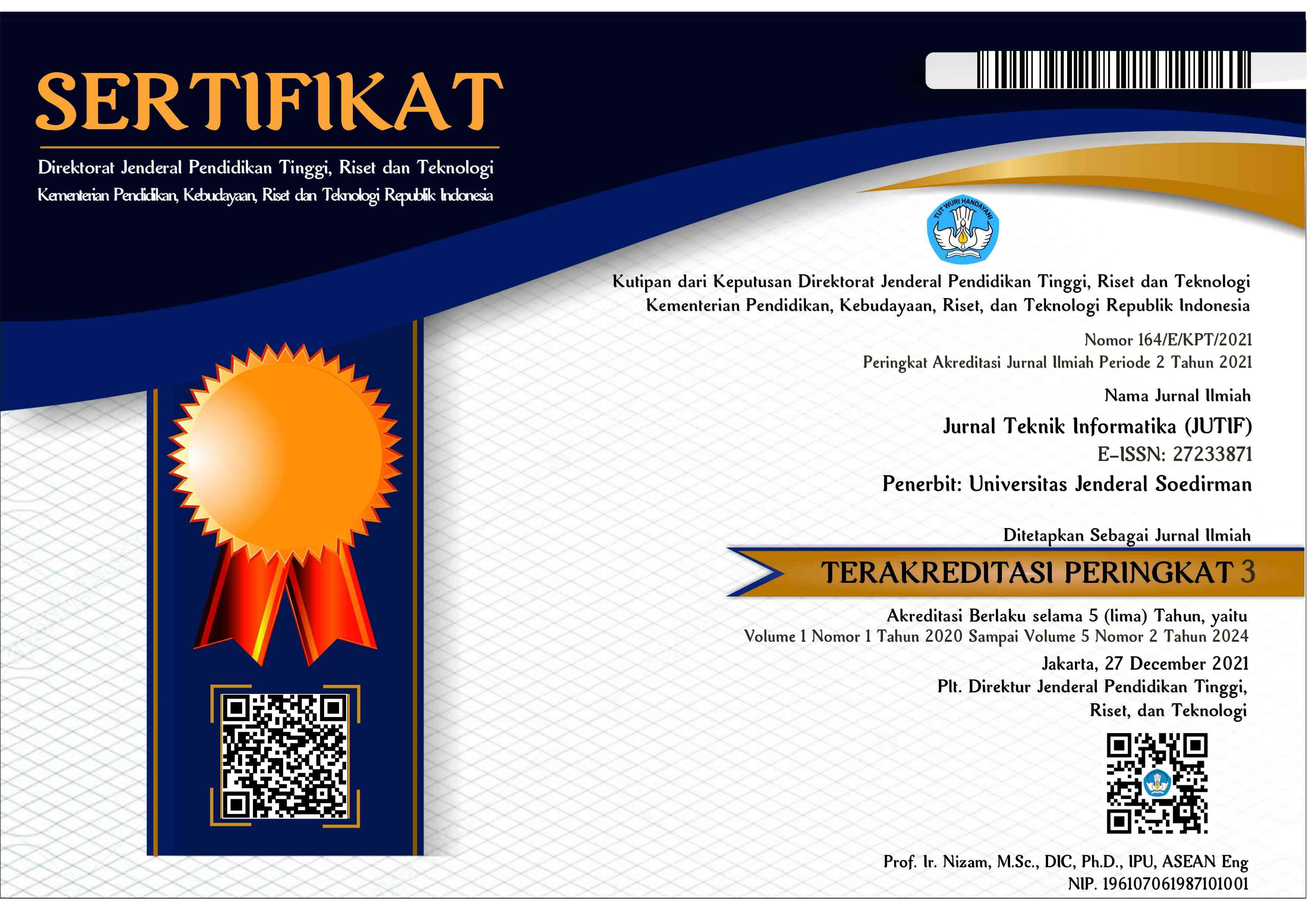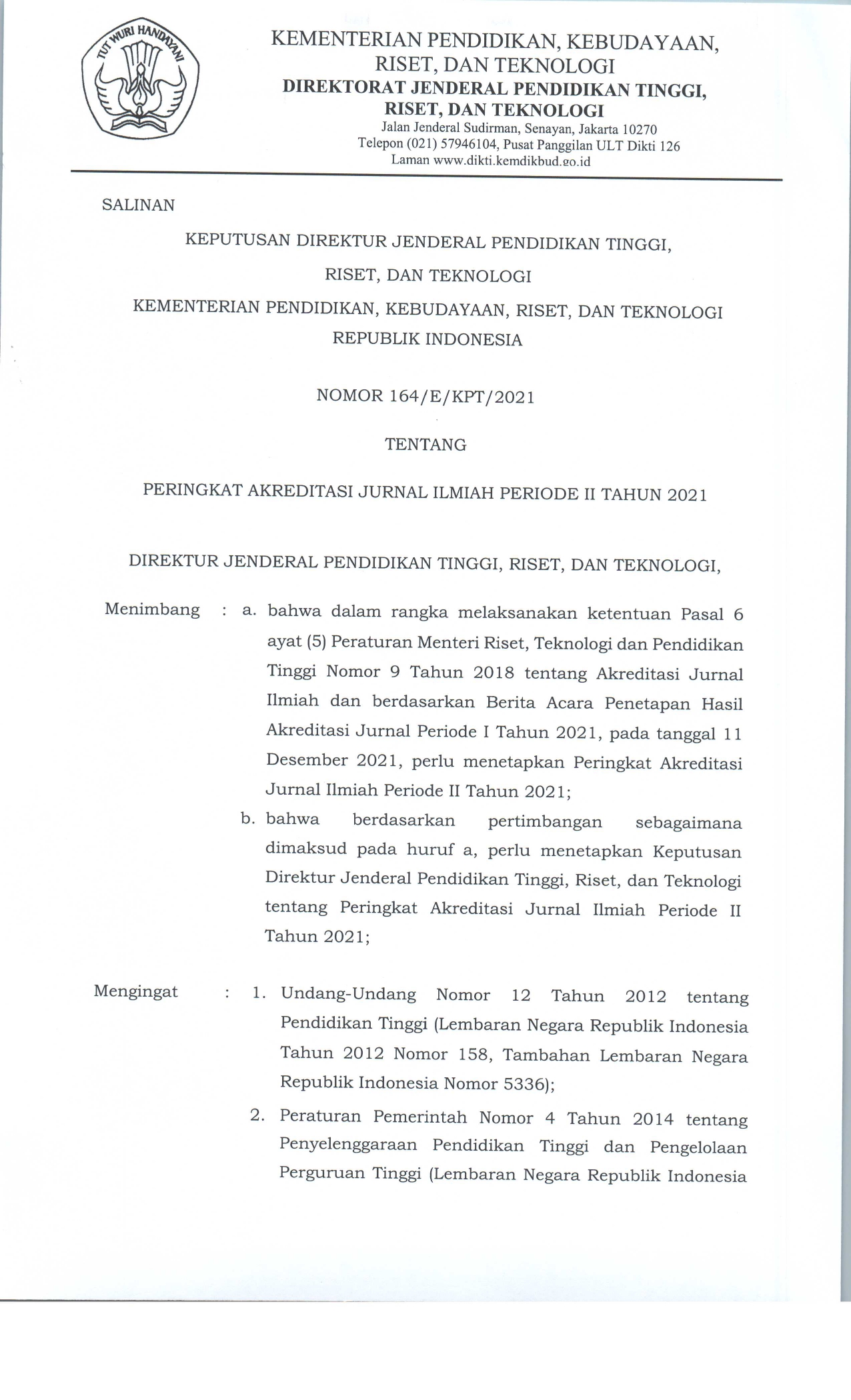CUSTOMER LOYALTY SEGMENTATION IN ONLINE STORE USING LRFM AND MLRFM IN COMBINATION WITH RM K-MEANS ALGORITHM
Abstract
The rapid development of online business in recent years has driven Store X to embark on a digital transformation. By the end of 2020, Store X relocate their conventional business to online business. The greatest obstacle and key to success for online business operators, such as Store X, is gaining and retaining consumer loyalty in the face of an increasing number of competitors. Therefore, the company must be able to identify the character (behavior) of its clients to provide appropriate treatment. Each customer's behavior is unique, which means they must all be treated differently. However, all this time, Online Store X has provided the same treatment (as much of a discount) to all its customers due to the lack of information regarding their customers’ characteristics. Therefore, in this study, customers of Online Store X were segmented based on their transactional behavior using online transaction history data from March 2021 to March 2023. Two customer analysis models, LRFM and MLRFM, will be combined with RM K-Means to find the best combination through Silhouette Coefficient values. The optimal number of clusters (k) is then determined using the Elbow Method. The results indicate that the optimal number of clusters for both combinations is K=3, with the combination of MLRFM and RM K-Means is the best combination. The finest combination has a silhouette coefficient value of 0.8609. Based on this combination, it is also known that 2,053 customers in cluster 3 are loyal customers, while 2,339 customers in cluster 1 and 2 are lost customers. The results of this study were also implemented on websites built for X Store using Python programming languages and MySQL databases, making it easier for companies to see data visualization.
Downloads
References
A. Premana, G. Fitralisma, A. Yulianto, M. B. Zaman, and M. A. Wiryo, “Pemanfaatan Teknologi Informasi Pada Pertumbuhan Ekonomi Dalam Era Disrupsi 4.0”, J. of Eco. and Manag. (JECMA) , vol. 2, no. 2, pp. 1–6, Aug. 2020, doi: 10.46772/jecma.v1i01.219.
N. Nofiyanti and G. Wiwoho, “Pengaruh Perceived Usefulness dan Perceived Value Terhadap Online Repurchase Intention pada Marketplace Shopee di Kecamatan Kebumen dengan Customer Satisfaction sebagai Variabel Intervening”, J. Ilmiah Mahasiswa Manaj. Bis. dan Akun. (JIMMBA), vol. 2, no. 2, pp. 281-290, Apr. 2020, doi: 10.32639/jimmba.v2i2.477.
M. A. Rizaty, "Transaksi e-Commerce RI Tak Capai Target pada 2022," Dataindonesia, Jan. 24, 2023. Accessed: Oct. 5, 2023. [Online]. Available: https://dataindonesia.id/digital/detail/transaksi-ecommerce-ri-tak-capai-target-pada-2022.
I. Tzavlopoulos, K. Gotzamani, A. Andronikidis, and C. Vassiliadis, "Determining The Impact of E-Commerce Quality on Customers Perceived Risk, Satisfaction, Value and Loyalty," Inter J. of Quality and Service Sci., vol. 11, no. 4, pp. 576-587, Dec. 2019, doi: 10.1108/ijqss-03-2019-0047.
P. Rita, T. Oliveira, and A Farisa, "The Impact of E-Service Quality and Customer Satisfaction on Customer Behavior in Online Shopping", Heliyon, vol. 5, no. 10, pp. 1-14, Oct. 2019, doi: 10.1016/j.heliyon.2019.e02690.
Y. F. Rahardian and B. Syairudin, "Segmentation Analysis of Students in X Course with RFM Model and Clustering," J. Sos. Hum. (JSH), vol. 0, no. 1, pp. 59-79, Aug. 2020, doi: 10.12962/j24433527.v0i1.6776.
S. Monalisa, P. Nadya, and R. Novita, "Analysis for Customer Lifetime Value Categorization with RFM Model," in Procs. Comp. Sci., 2019, pp. 834-840, doi: 10.1016/j.procs.2019.11.190.
R. Pradhan, "Customer Segmentation Using Clustering Approach Based on RFM Analysis," in Inter. Conference on Infor. Sys. and Comp. Networks (ISCON), 2021, pp. 1-5, doi: 10.1109/ISCON52037.2021.9702482.
A. A. D. Sulistyawati and M. Sadikin, "Penerapan Algoritma K-Medoids Untuk Menentukan Segmentasi Pelanggan," J. Sis. Infor. (SISTEMASI), vol. 10, no. 3, pp. 516-526, Sept. 2021, doi: 10.32520/stmsi.v10i3.1332.
A. Widiyanto and A. Witanti, "Segmentasi Pelanggan Berdasarkan Analisis RFM Menggunakan Algoritma K-Means Sebagai Dasar Strategi Pemasaran (Studi Kasus PT Coversuper Indonesia Global)," Konvergensi Tek. dan Sis. Infor (Konstelasi), vol. 1, no. 1, pp. 204-215, Apr. 2021, doi: 10.24002/konstelasi.v1i1.4293.
R. Siagian, P. Sirait, and A. Halima, "E-Commerce Customer Segmentation Using K-Means Algorithm And Length, Recency, Frequency, Monetary Model," J. of Inform. and Telecomm. Engineering (JITE), vol. 5, no. 1, pp. 21-39, Jul. 2021, doi: 10.31289/jite.v5i1.5182.
D. Adillah, N. Manurung, and A. Dermawan. "Implementation of K-Means Clustering Analysis to Determine Barriers to Online Learning Case Study: Swasta Yapendak Tinjowan Junior High School," J. Tek. Inform. (JUTIF), vol. 3, no. 3, pp. 519-525, Jun. 2022, doi: 10.20884/1.jutif.2022.3.3.188.
R. Rahmadianti, A. Dhini, and E. Laoh, "Estimating Customer Lifetime Value using LRFM Model in Pharmaceutical and Medical Device Distribution Company," in Inter. Con. on ICT for Smart Society (ICISS), 2020, doi: 10.1109/iciss50791.2020.9307592.
A. Handojo, N. Pujawan, B. Santosa, and M. L. Singgih, "A Multi Layer Recency Frequency Monetary Method For Customer Priority Segmentation in Online Transaction," Cogent Engineering, vol. 10, no. 1, pp. 1-19, Jan. 2023, doi: 10.1080/23311916.2022.2162679.
A. J. Christy, A. Umamakeswari, L. Priyatharsini, and A. Neyaa, "RFM Ranking – An Effective Approach to Customer Segmentation," J. of King Saud Univ., vol. 33, no. 10, pp. 1251-1257, Sept. 2018, doi: 10.1016/j.jksuci.2018.09.004.
S. H. Chao, M. K. Chen, and H. H. Wu, "An LRFM Model to Analyze Outpatient Loyalty From a Medical Center in Taiwan," SAGE Open, vol. 11, no. 3, Jul. 2021, doi: 10.1177/21582440211031899.
M. Nishom, "Perbandingan Akurasi Euclidean Distance, Minkowski Distance, dan Manhattan Distance Pada Algoritma K-Means Clustering Berbasis Chi-Square," J. Infor.: J. Pengembangan IT (JPIT), vol. 4, no. 1, pp. 20-24, Jan. 2019, doi: 10.30591/jpit.v4i1.1253.
P. M. Hasugian, B. Sinaga, J. Manurung, and S. A. Al Hashim, "Best Cluster Optimization with Combination of K-Means Algorithm And Elbow Method Towards Rice Production Status Determination,". Inter. J. Of Artif. Intel. (IJAIR), vol. 5, no. 1, pp. 102-110, Jun. 2021, doi: 10.29099/ijair.v6i1.232.
E. Umargono, J. E. Suseno, and V. Gunawan, "K-Means Clustering Optimization Using the Elbow Method and Early Centroid Determination Based on Mean and Median Formula," in Proceedings of the 2nd Inter. Seminar on Sci. and Tech., 2019, vol. 474, pp. 121-129, doi: 10.2991/assehr.k.201010.019.
H.B. Tambunan, D. H. Barus, J. Hartono, A. S. Alam, D. A. Nugraha, and H. H. H. Usman, "Electrical Peak Load Clustering Analysis Using K-Means Algorithm and Silhouette Coefficient," in Inter. Conference on Tech. and Policy in Energy and Electric Power (ICT-PEP), 2020, doi: 10.1109/ict-pep50916.2020.9249773.
I. Pauletic, L. N. Prskalo, and M. B. Bakaric, "An Overview of Clustering Models with an Application to Document Clustering," in Inter. Convention on Infor. and Communication Tech., Electronics and Microelectronic (MIPRO), (Croatia), 2019, doi: 10.23919/mipro.2019.8756868.
S. H. Ha and S. C. Park, "Application of Data Mining Tools To Hotel Data Mart on The Intranet Fordatabase Marketing," Expert Syst. Appl., vol. 15, pp. 1–13, 1998.
T, Juhari and A. Juarna, "Implementation Rfm Analysis Model For Customer Segmentation Using The K-Means Algorithm Case Study XYZ Online Bookstore," Explore, vol. 12, no. 1, pp. 107-118, 2022, doi: 10.35200/explore.v12i1.548.
L. Kaufman and P. J. Rousseeuw, in Finding Groups in Data an Introduction to Cluster Analysis, 1st ed. Hoboken, New Jersey, U.S.: John Wiley & Sons Inc. Publication, 1990. . Accessed: Sept. 28, 2023. [Online]. Available: 10.1002/9780470316801.
Copyright (c) 2024 Angelina Caroline Utomo, Andreas Handojo, Tanti Octavia

This work is licensed under a Creative Commons Attribution 4.0 International License.





























